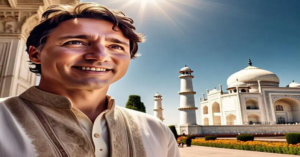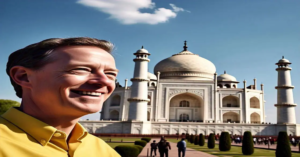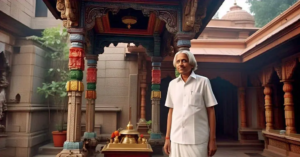The Hidden Psychology in Fyodor Dostoevsky Novels: What Most Readers Miss

Nietzsche once declared Fyodor Dostoevsky the only psychologist he had anything to learn from, thanks to his psychologically profound novels. A closer look at Crime and Punishment or The Brothers Karamazov reveals more than just fiction. These works offer a masterclass in human psychology that predicted concepts which would only be formalized decades later.
Fyodor Mikhailovich Dostoevsky’s exploration of psychological repression became the foundation for psychoanalysis. Freud’s praise was telling – he called The Brothers Karamazov “the most masterly novel ever written.”His broader work serves as a big experimental canvas where he continuously explores the problem of selfhood.
Let me take you through the hidden psychological dimensions that make Dostoevsky’s novels revolutionary psychological studies. These works are not just literary masterpieces – they continue to appeal to our understanding of the human mind today.
The Psychological Depth of Fyodor Dostoevsky Characters
Exploring deeply into a Dostoevsky novel brings you face to face with characters who surpass typical literary boundaries. His creations breathe, suffer, and contradict themselves with stunning psychological authenticity, unlike the flat personalities in most 19th-century fiction. These qualities are the foundations of his lasting literary legacy.
Why his characters feel real and complex
Dostoevsky’s characters come alive in remarkable ways. They embody psychological contradictions that mirror our own inner battles. His main characters hold conflicting desires, thoughts, and motivations at the same time—just like real people do. Take Prince Myshkin from The Idiot. His compassionate nature clashes with his social awkwardness, which makes him feel genuine despite his extreme qualities.
The author broke new ground by using inner monolog to show his characters’ psychological states. He doesn’t just describe what they do—he takes readers deep into their turbulent minds. This creates a unique closeness between reader and character. We don’t just watch Raskolnikov pace his cramped room in Crime and Punishment—we feel his anxiety right there with him.
Dostoevsky’s characters grow through psychological crisis, not convenient plot twists. Their changes come from deep internal battles. Dmitri Karamazov’s path from pleasure-seeking to spiritual awakening happens through psychological torment rather than outside events. This makes their development feel natural rather than forced by the story.
The author also refused to put characters in simple moral boxes. They aren’t heroes or villains but complex people capable of both greatness and darkness—often at the same time. All but one of his most despicable characters show some good qualities, while his most virtuous ones fight dark urges. This moral complexity shows the author’s grasp of human nature’s resistance to easy labels.
Psychological trauma runs deep in Dostoevsky’s characters, giving them unusual depth for his time. Stavrogin’s confession in Demons reveals childhood wounds behind his adult actions. Sonia in Crime and Punishment shows inner strength despite deep suffering. This focus on why things happen makes their actions believable, no matter how extreme.
How he predicted modern psychological theory
The author expressed psychological concepts decades before they became formal theories. His natural understanding of human psychology pointed the way for multiple schools of psychological thought.
Dostoevsky saw Freudian psychoanalysis coming through his exploration of hidden motives and psychological repression. The Underground Man’s self-destructive behavior, despite knowing better, shows what Freud later said about unconscious drives. On top of that, he understood dreams’ psychological importance long before Freud’s The Interpretation of Dreams. Raskolnikov’s nightmares reveal mental states he pushes down, opening windows into his unconscious mind.
His work laid the groundwork for existential psychology. Cognitive dissonance theory appears throughout his novels. Raskolnikov breaks down in part because his intellectual reasons for murder clash with his moral instincts. Leon Festinger didn’t formally identify this psychological mechanism until the 1950s.
These insights stand out because they came from watching and understanding people, not scientific study. He lived inside his characters so completely that their psychological reality jumps off the page. Modern readers find not just gripping stories but psychological truths that feel surprisingly current.
Dostoevsky’s psychological depth comes from his belief that humans are incredibly complex. Instead of simplifying this complexity to make the story easier, he embraced it. He created characters whose psychological truth continues to appeal across centuries and cultures.
Crime and Punishment: Fyodor Dostoevsky

Dostoevsky shows us how intellectual pride, mental anguish, and spiritual rebirth connect through this troubled character.
Fyodor Dostoevsky theory of extraordinary men
Raskolnikov’s psychology centers on his controversial theory that splits humanity into two groups: ordinary and extraordinary people. His framework states that “ordinary people have to live in submission and have no right to transgress the law, because they are ordinary.” The extraordinary ones, however, “have the right to commit any crime and to transgress the law in any way, just because they are extraordinary.”
Raskolnikov believes exceptional individuals like Napoleon have an “inner right” to cross moral lines if it serves a greater purpose. These remarkable people might do terrible things, yet their actions become justified because they move civilization forward. They “sanction bloodshed in the name of conscience.”
This theory reflects how desperately Raskolnikov needs to feel important. He dropped out of university and fell into poverty. These failures led him to seek validation through his philosophical ideas. He tests if he belongs among the extraordinary to lift himself above his miserable life.
Raskolnikov kills the pawnbroker Alyona Ivanovna not just for money but to find out “whether I was a louse like everybody else or a man. Whether I can step over barriers or not.” He turns himself into both the researcher and subject of his philosophical experiment.
The psychological toll of guilt
His intellectual justifications fall apart under the pressure of reality. The murder doesn’t prove he’s extraordinary. Instead, it triggers overwhelming guilt that shows up in his body and mind. He suffers from feverish delirium, paranoia, and cuts himself off from others—his body rebels against his mind’s attempts to rationalize.
His mental breakdown reveals the flaw in his theory. A truly extraordinary person wouldn’t feel troubled by their actions. Yet his conscience torments him constantly. One critic points out that “he falls a victim of what he has been struggling to distance himself from; his own emotions.”
The novel’s central psychological drama plays out in Raskolnikov’s swings between pride and self-hatred. He tries to justify the murder with logic—saying he “simply killed for myself alone”—but his mental state tells us something else. His guilt makes him tell his family to “forget me altogether,” but this isolation only makes his suffering worse.
Raskolnikov’s struggle between intellectual reasoning and raw guilt shows Dostoevsky’s deep understanding: human psychology can’t be simplified into abstract theories. Our moral nature comes through no matter how we try to justify our actions.
Fyodor Dostoevsky Redemption through suffering
Dostoevsky ended up showing that suffering isn’t punishment but a way to redemption. Raskolnikov confesses because his conscience becomes unbearable and Sonya guides him spiritually. His time in Siberia becomes more than just punishment—it cleanses his soul.
His prison time changes him completely. Physical confinement sets his spirit free as he finally lets go of his pride and accepts his human weaknesses. Sonya becomes his “redemptive savior/angel” and shows him selflessness and faith despite her own hardships. She helps him see how he could start fresh spiritually.
Dostoevsky suggests that real punishment happens inside us—through “the extreme undesired mental and emotional torment and psychological suffering.” Raskolnikov can only start his journey toward redemption by fully feeling this pain. The novel’s epilog hints this process isn’t complete but looks promising—”the beginning of a new story, the story of a man’s gradual renewal and rebirth.”
This change shows a key truth in Dostoevsky’s view of life: people find redemption not by avoiding pain but by embracing it fully. Raskolnikov’s experience from proud intellectual to humble acceptance shows us how redemption exceeds religious rules while keeping spiritual meaning.
Fyodor Dostoevsky: The Birth of Existential Psychology
Notes from Underground stands out as Fyodor Mikhailovich Dostoevsky’s most groundbreaking psychological work. The 1864 novella gives us a narrator whose troubled mind paints a surprisingly modern picture of existential anxiety. This came decades before existentialism became a formal philosophical movement.
Fyodor Dostoevsky The Underground contradictions
The Underground Man lives in a world full of clashing contradictions. He calls himself “sick” and “spiteful,” yet refuses to see a doctor just “out of spite.” This self-destructive behavior shows up throughout the story. He’s a mix of opposites:
- Smart enough to understand everything but can’t take meaningful action
- Yearns for human connection but pushes everyone away
- Knows right from wrong but can’t act on it
- Looks down on society but desperately wants its approval
“I swear to you, gentlemen, that to be overly conscious is a sickness, a real, thorough sickness,” says the Underground Man. Through this character, Dostoevsky shows us how human psychology doesn’t follow neat, rational rules. The character’s irrational nature challenges the utilitarian and rationalist ideas of Dostoevsky’s time. His contradictions make us question whether we can reduce humans to simple logical formulas.
Fyodor Dostoevsky Self-awareness as a trap
While Romantic writers thought self-knowledge brought enlightenment, Dostoevsky shows us how too much self-awareness can become a prison. The Underground Man’s extreme self-consciousness leaves him paralyzed. One scholar describes this as “a kind of mental claustrophobia—a crushing sense of being imprisoned in one’s own psyche.”
The Underground Man can’t act because he thinks too much. “Every impulse is questioned until it disappears. Every feeling is inspected until it becomes inert.” This shows how excessive self-reflection works like an autoimmune disorder where “the mind turns on itself.”
This description mirrors what we now know as rumination and overthinking. The Underground Man gets stuck in an endless cycle of doubt and analysis. He can’t bridge the gap between thinking and doing. His inability to act comes from what we might call “philosophical overload”—something anyone who’s faced analysis paralysis would understand.
Fyodor Dostoevsky The fear of mediocrity
Behind all his philosophical talk, the Underground Man deeply fears being ordinary. He’s frustrated that he “never even managed to become anything: neither wicked nor good, neither a scoundrel nor an honest man, neither a hero nor an insect.” His escape to the underground shows his rebellion against being average—the scary thought of being just another face in the crowd.
“The abyss between his flawed self-conception and the inconvenience of reality is filled with a despairing envy and hatred of those he encounters.” This reveals how his fear of being ordinary turns into hatred for people who seem to handle life better. His anxiety about being mediocre strikes a chord with today’s concerns about significance and validation.
This fear pushes him toward theoretical extremes instead of practical action. He’d rather hold onto a “perfect conception of himself” than deal with life’s messy reality. He won’t “expose himself to experience” and ends up “festering like an unplanted seed, his potential growth extinguished.”
Dostoevsky saw something that existential psychologists would later call “existential anxiety”—the stress of facing life’s meaninglessness and creating our own purpose. Through the Underground Man, he suggests that accepting our ordinary human nature, with all its limits and contradictions, lets us live authentically.
Notes from Underground isn’t just a literary masterpiece—it’s the first real story about existential psychology. It shows us how our own minds can become our prison, and how being afraid of mediocrity can stop us from truly living.
Fyodor Dostoevsky: The Double and the Anxiety
“The Double” ranks among Fyodor Mikhailovich Dostoevsky’s most psychologically insightful works. It takes a closer look at identity fragmentation well before modern psychology had words to describe such phenomena. This novella follows government clerk Yakov Petrovich Golyadkin and his mysterious doppelgänger through psychological territory that resonates with today’s readers.
The doppelgänger as a fractured self
Identity emerges as unstable and prone to fracture in “The Double.” The story’s protagonist Golyadkin meets an exact physical copy of himself who systematically undermines his already shaky social position. This double serves as more than just a supernatural oddity—it embodies “the immoral manners of a man” and “reflects the complex divisions or contradictions within an individual’s personality”.
Dostoevsky brilliantly uses the doppelgänger to symbolize psychological splitting. The double exists not just as an external threat but reveals Golyadkin’s hidden character traits. The double (Golyadkin Junior) becomes everything Golyadkin Senior isn’t—”more confident, charming, and sociable”. Such contrast shows how the protagonist has buried certain aspects of his personality that return in external form.
A psychological perspective reveals the doppelgänger as “a split or breakdown of the ego within the protagonist himself”. The novella’s doctor diagnoses Golyadkin with “an introverted personality and paranoia”. Dostoevsky’s understanding of what we now call psychological dissociation came decades before formal psychological theory.
The doppelgänger theme connects to “a person’s ability—or lack thereof—to truly know who they are”. The double becomes a character that “forces the protagonist to deal with the uncomfortable realities of their identity”. Such psychological confrontation creates deep anxiety, as the double’s existence “raises uncomfortable questions for the protagonist regarding their identity and sense of self-worth”.
Modern parallels in online identity
Dostoevsky’s exploration of fragmented identity mirrors our digital age perfectly. Like Golyadkin’s double represented his unintegrated aspects, our carefully crafted online personas often show idealized versions that exist apart from our daily lives.
Social media profiles act like modern doppelgängers—curated self-images that often stray substantially from our authentic selves. One source points out that “that carefully curated online persona? That’s our modern-day double”. These psychological dynamics match Golyadkin’s experience: “The anxiety, the constant comparison, the fear of being ‘found out’ as less than perfect” echo his torment when faced with his more socially skilled double.
Digital identity involves the same “splintering of the soul that is caused by any rigid society”. The need to show an ideal image while hiding less appealing parts of our personality creates the exact kind of fractured identity Dostoevsky explored through his doppelgänger theme.
“The Double” teaches us a profound psychological lesson: pushing away parts of our personality doesn’t make them vanish—they might return in twisted, destructive ways. Keep in mind that genuine psychological health needs integration rather than denial—a lesson that applies to both Golyadkin’s split psyche and our divided digital selves.
Fyodor Dostoevsky The Brothers Karamazov: Family and Inner Conflict
The Brothers Karamazov stands as Fyodor Mikhailovich Dostoevsky’s greatest work. The novel creates a psychological battleground where faith and reason collide within a broken family. His final masterpiece shows the peak of his psychological understanding and reveals how family relationships shape our deepest life struggles.
Ivan’s intellectual despair
Ivan Karamazov shows us the pain of a thinker who can’t resolve the conflict between logic and faith. His clear and powerful arguments against religious belief make him one of literature’s most compelling atheist voices. He rebels against God because he can’t accept how innocent children suffer while believing in a loving deity.
The heart of Ivan’s inner conflict lies in his famous words “if God does not exist, everything is permitted” – a belief that leads to his downfall. His mind rejects morality, yet his conscience haunts him. His father’s murder pushes him toward madness as he grapples with guilt. Though he didn’t kill his father, his ideas might have given permission for the crime.
Alyosha’s spiritual experience
Alyosha shows us a different path – his faith endures despite challenges. He shines as “the beacon of Christian faith” with a pure heart and generous spirit that makes him the novel’s true hero. His faith isn’t blind but strengthened through doubt and pain – it remains “incarnational, lived, embodied, tender, and humble.”
Elder Zosima guides Alyosha’s spiritual growth. The elder’s teaching of “radical love” shows that “the suffering of one is the responsibility of all.” These lessons lead Alyosha into the world not to avoid pain but to heal it through compassion. Later, he responds to Ivan’s intellectual challenges with a kiss, showing how compassion exceeds rational debate.
Fyodor Dostoevsky The father-son dynamic
Fyodor Pavlovich’s complete failure as a father creates the psychological foundation of the story. Dostoevsky believes “the family is the source of moral guidance.” Without this guidance, people become “detriments to society.” His neglect twisted each son’s development – they grew up wearing “nothing but dirty undershirts as small children” while he chased pleasure.
The Karamazov brothers look for father figures everywhere – in the military, intellectual groups, and monasteries. Staff Captain Snegiroyov’s relationship with his son Ilyusha shows what real fatherhood means. Their “mutual devotion” contrasts sharply with Fyodor’s failures and proves how a parent’s love promotes mental well-being.
Why Fyodor Dostoevsky Still Matters in Modern Psychology
Fyodor Mikhailovich Dostoevsky’s psychological insights still light up our understanding of human behavior, even years after his death. His novels act as deep case studies of the human condition and give timeless insights into how we work inside.
His influence on Freud and Jung
These themes matched the unconscious conflicts central to his own theories. Freud placed Dostoevsky second only to Shakespeare in literary achievement, which showed his huge impact on both literature and psychology.
“Dostoevsky cannot be understood without psychoanalysis,” Freud wrote to Stefan Zweig, “i.e., he isn’t in need of it because he illustrates it himself in every character and every sentence.” Freud always said that “the poets” had found the unconscious before he gave it scientific form.
Relevance to today’s mental health challenges
Dostoevsky’s characters explore psychological areas that still matter in modern mental health:
- His depiction of unresolved trauma through obsessive behaviors matches what we now know about post-traumatic stress
- Characters like Raskolnikov show how rigid thinking affects mental health
- His portrayal of psychological breakthroughs through suffering mirrors modern therapy’s focus on resilience
His view of suffering as a path to growth connects with today’s ideas about post-traumatic growth. Dostoevsky’s blend of theological frameworks makes us think about how faith shapes resilience and coping methods. These insights extend into research about faith’s role in mental health.
Fyodor Dostoevsky: enduring mystery of the human soul
Dostoevsky’s greatest gift to psychology might be his firm belief that humans can’t be reduced to simple formulas. “I am a realist in the highest sense,” he once declared, “that is to say, I show the depths of the human soul.”
This view challenges purely scientific approaches to psychology. Modern scientific psychology often looks at measurable phenomena, but Dostoevsky reminds us that human experience goes beyond clinical categories. It includes contradictions, irrational drives, and spiritual yearnings. His characters find redemption by embracing suffering rather than avoiding it, which offers a different view from symptom-focused mental health approaches.
Nietzsche called him “the only psychologist from whom I had anything to learn”—likely because Dostoevsky never tried to simplify human consciousness but instead showed its true depths.
Conclusion
A deep look at Dostoevsky’s works reveals why his novels surpass basic literary achievement. Fyodor Mikhailovich didn’t just create characters – he brought to life psychological case studies whose inner turmoil resonates powerfully today. His work mapped uncharted territories of the human mind that science would formally identify decades later. Raskolnikov’s guilt, the Underground Man’s existential paralysis, Golyadkin’s fractured identity, and the Karamazov brothers’ spiritual struggles stand as testament to his insight.
His psychological observations pack such power because they reject oversimplified answers. Dostoevsky saw humans as walking contradictions – we crave freedom yet fear its risks, yearn for connection while destroying relationships, and build rational arguments that our emotions ended up undermining. This raw psychological truth keeps his works fresh despite their 19th-century roots.
His novels gave birth to multiple therapeutic approaches without any formal psychology training. Modern concepts of post-traumatic growth connect with his view of suffering as redemptive, while his deep dive into unconscious motivation became a foundation for psychoanalysis. His characters’ existential battles sparked entire schools of psychological thought.
Reading Dostoevsky requires looking past plot points and philosophical debates. The psychological undercurrents tell the real story – irrational behaviors, self-sabotage, and moments when characters betray their stated beliefs. His true genius lies here: crafting compelling narratives that expose the mysterious depths of human nature that psychology still tries to understand.



















